Analysing a League 2 opposition report
I decided to compare a report I put together in person with the video of the game itself. There was some good things, but some bad. Actually a lot of bad...
I was going through some old notes under my desk when I came across a thick envelope. I opened it, and there were three old match reports I’d written, held together with bulldog clips.
These were from several years ago. I would go to matches, usually in League 2, make copious notes (Lesson 1 – more on the lessons later), and then write a match report. It would detail how a team played, their strengths, weaknesses, some player notes. And I’d do this fast, sending it to the clubs set to face that team in the coming weeks. Then I’d wait.
I got zero replies.
That’s not true. One manager sent me an email thanking me for sending it, but no interest in further work. Another club sent a one-sentence letter, on headed paper, saying the same. I still have the letter.
These rejections were devastating. I told myself the reports were not reaching the right people. Or clubs had no vacancies. It never crossed my mind that the reports might not be good enough (Lesson 2).
But finding these reports presented an interesting opportunity.
What if I looked up these games on Wyscout? Then compared what I could see now in the video with what I’d included in the report. I could answer that question once and for all: Were they good reports, or bad?
I have to tell you now that what I discovered was not exactly what I was hoping for. There were some good points, but some bad. Actually, a lot of the bad. There were also some surprises (Lesson 3).
In any case, it provided a chance to consider what I would do differently. And how I’d go about these reports if I was doing them again (Lesson 4).
So if you’re curious how this all went, read on. I’ll also include pictures of the report itself. And some thoughts on the four main lessons I learned on the way.
The game in question was Gillingham vs Salford from several years ago. The result was a dismal 0-3 defeat for the home side, another bad result in a pretty grim season.
So how best to create this little exercise?
I thought about watching the game again and treating it as though I were back in the Priestfield stadium. I could make the same copious notes, then use them to create a mock report.

The problem was my inability to convince myself practice reports are worth doing. I can’t seem to drum up motivation for a training exercise. I need the real thing.
I decided instead on a quicker approach.
I’d pick out the strengths and weaknesses from the report and check each one. If I could find three examples of Gillingham doing each, then that was good. If I couldn’t, well, that was bad.
So I coded the game, creating playlists of possession and out of possession, and got to work.
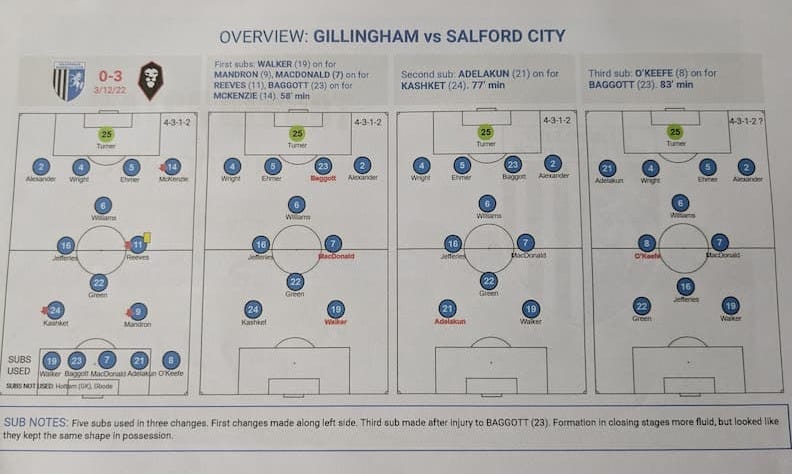
How to begin
I divided phases into three sections.
Playing out from the keeper
Progression phase
Final third.
I reversed that for out of possession play.
I’ll start by describing how possession went. Because, well… that’s the positive bit.
In Possession
This is the list of things I decided to look for.
Gillingham use a 4-1-3-2 shape (diamond midfield)
They kept Salford pinned in their own half in the first half of the game
The center backs play long passes from their own half to the corners for the center forward to run onto. Their attacking midfielder supports on the inside.
The full backs stay very wide on the touchlines.
They create overloads in wide areas to play crosses
Mandron (9) is a target in the box. Neither forward drops deep in build up.
The AM Green (22) rarely gets into the box. Best when shooting from outside the 18-yard line.
They rarely switched play.
Their heads dropped when they went 1-0 down.
I added a few more related to attacking play in the final third.
Green (22) gives the ball away a lot in the opposition's half.
The team’s finishing was poor.
Lots of walking back rather than running.
They used a diamond shape in midfield but no control of the center.
The Outcome
I’m happy to say that I got most of this right.
Kind of.
Gillingham did play with a diamond midfield. The center backs did play long into the corners. The forwards drifted wide. And, with support from the attacking midfielder and the wide midfielder created overloads. From there they played crosses into the box.
I could find three examples of this very easily.
I could also show (or not show) that they didn’t play switches. Of seven switches in the game, six were by Salford. Finally, the fullbacks did stay very wide.
I’ve highlighted everything I got right in bold.
But you’ll have noticed already there’s a lot not in bold. Also, there’s plenty I didn’t say about what is.
What I didn’t say…
For instance…
The fullbacks did stay wide. But I didn’t say the left back liked to push into the final third. Or that the right back made several underlapping runs in the first half.
Gillingham did create overloads wide, but not always. Sometimes the forwards were isolated in the corners. Or the pass into them created too much work to do.
Their lack of switching was likely intentional. Or at least a consequence of their shape in midfield. And while Madron (9) was a target in the box that point seemed a bit obvious. Of course he was. That was his job. It was as useful as saying that the keeper stays in his box.
Likewise the finishing. Yes, it was poor. But the scoreline already hinted at that.
It’s not that it’s useless information. But a report ought to contain gold. Not any old scrap metal.
But now we come to the points above that are not in bold…
Where things went wrong…
Gillingham did control the first half. But they didn’t exactly keep Salford pinned back. And while their heads did drop Gillingham was an underperforming side all season. You’d expect this a little.
But the bigger issue was Green (22). I owe the man an apology.
This was Jordan Green, a non-league journeyman. I described him in the player notes as “looked mobile with good speed across the width of the pitch”. That was true. But everything else I wrote about him was not.
He didn’t get into the box, and did stay along the 18-yard line. But at 5’6’’ it wasn’t a great tactical insight to guess why. But anyway, watching back through clips he did get into the box when he needed to.
I also said he gave the ball away. This was plain wrong.
He did lose possession a couple of times, but usually when pressed by two or three players and in a tight spot. Otherwise, I thought he worked hard all game. He was one of the better players on the day, making intelligent runs and looking to create chances.
I had missed this on the day. But there was worse to come…
Out of possession
Let's press on. This was the list of things I decided to look for out of possession. Starting with Salford playing out from the keeper:
Gillingham tried to force Salford to play through the center.
They had a 3v2 against the Salford pivot.
The wide midfielders pressed the Salford fullbacks when they received the ball.
There was space in the center if Salford played inside from their fullbacks, or switched play.
Green (22) was poor in defense. Looked lost and out of position, not covering gaps.
Williams (6) has no speed but is good positionally.
The good... Yes, the wide midfielders did press the fullbacks, and I showed it in images in the report. But it was one of the more obvious things to spot from the game.
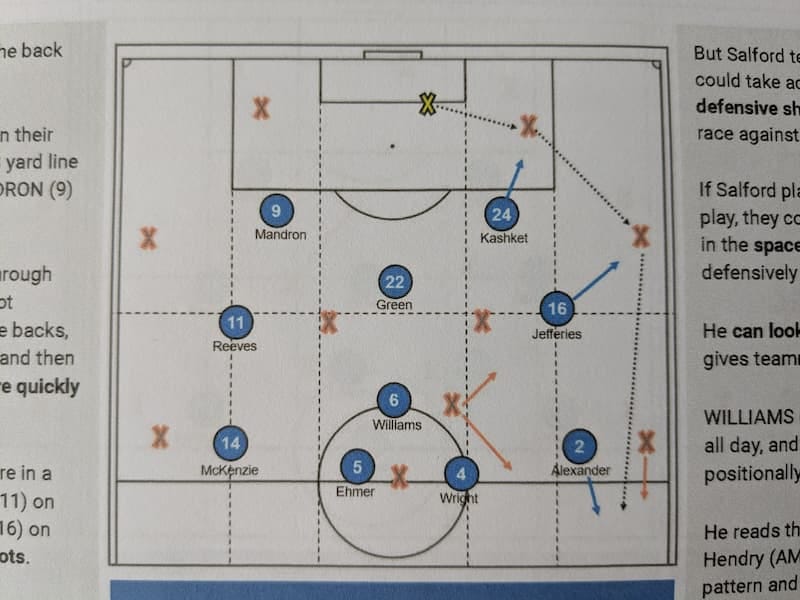
Yes, there was space in the center too. Salford were able to expose the Gillingham diamond midfield. That part is true.
And Williams (6) as the single pivot was decent in a positional sense. And he had to be because he lacked any great pace to cover ground.
But in no way did Gillingham force Salford through the center.
In no way did they have an overload against the Salford pivot (because they played wide through their fullbacks, remember?). And Green (that man again) was not poor in defense. He didn’t look lost or out of position. He was simply isolated in 1v2s in the center and there was not much he could do about that.
Then it got worse.
Mid Block
Gillingham used a 4-1-3-2 shape: CORRECT
They only apply active pressure in their own half: WRONG
Green steps up between the forwards but looks lost: HE DOES BUT IS NOT LOST.
They allowed long balls to bounce in their own box: WRONG
The central midfielders didn’t always drop in behind the full backs if the FBs stepped out: WRONG
Salford switches along the halfway line exposed gaps in the Gillingham block: WRONG
You’ll notice I got almost everything wrong here. But let’s continue…
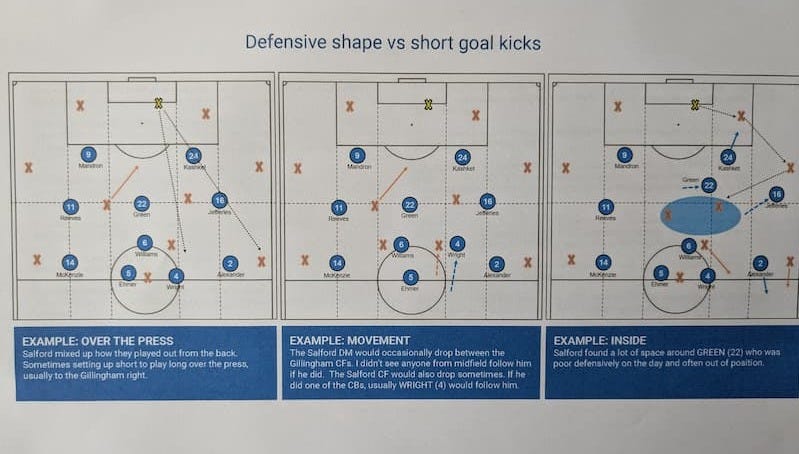
Low Block
Williams (6) gets drawn away from the center leaving acres of space: WRONG
Too often allowed space in front of the box: WRONG
Gillingham’s worst area was their midfield line: WRONG
I was going to carry on with transition but decided to stop there.
My reaction to all this
As you can see my opinion of myself took a mauling. It was an exercise in understanding tactics and observation. But also in humility.
What had surprised me was getting more of the attacking play right than the defensive play. Out of possession is usually where you can see a team’s plan. You get an idea of how they set up and what their intentions are. Possession is usually where there's more variations, and complex patterns to spot.
But I’d managed to get more of the defensive side wrong. Although my record in possession is hardly worth shouting about.
What to learn from all this?
So what about those lessons? What would I do differently now? And how might you avoid the same mistakes?
Lesson 1: Too many notes
I used to take far too many notes when I was at games. I’d had it taught to me that you should be writing everything you see. I still agree with that. But I may as well have spent 90 minutes writing a shopping list. The quality of your notes is as important as what you write.
In hindsight, I should have spent less time writing down every single passing pattern Gillingham used. (“long to the right, long to the right, long to the left, long to the right”). And more about how effective it was. Or wasn’t. How good was the execution, where were the problems, etc.
Lesson 2: Over-confidence
I remember thinking I knew what I was doing, even though it felt chaotic. I had no one to tell me otherwise which meant relying on what proved to be over-confidence. I was desperate to find someone who could tell me where I was going wrong. But without that someone I had only myself to judge my work. And with notebooks full of colour-coded handwriting, and a 30-page report to show for it on Monday morning, I felt like I was doing okay.
Lesson 3: How to watch a game
Notes have to be useful. They have to be valuable to the team you’re sending your report to. And they have to be super-efficient. It should make the life of the club’s analyst much easier.
I also think you should focus on the essentials first. Get down shapes, possession patterns, defensive setup, etc. Then focus on the details. I remember worrying how I would ever get down everything. I'd find myself almost trying to describe the entire game in my notes. that was a waste of time. There’s a better way to do that. But I didn't know what it was.
Lesson 4: What I’d do differently
For one thing, I would have tried to resist overreaching so early. The effect of sending reports to almost every team in League 2 did more harm than good. What they got was a 30-page report that looked the part. But if anyone dug into it they likely found more bad than good. It pains me to say all this. It’s also embarrassing. It’s a first impression I wasn’t able to take back.
I would also have paid more attention to how to watch a game. Getting the essentials and then adding to them as the game went on, as I said above. This is closer to how I approach games now.
What else?
I’d resist trying to overdeliver, and try to do a decent job first.
I wouldn't write players off without a second look.
I’d look for the causes of things – why a player was doing a certain thing. Why a team preferred one action over another. Less WHAT and far more WHY and HOW.
I’d remember to ask myself what the downside of a team’s play was as well as the advantage.
I’d watch players in more details.
I’d look for patterns. I’d see who occupied what space in build up.
I’d cover basics like height and width of defensive lines.
The list would be endless.
But to finish on a positive, what would I keep doing?
As contradictory as it might sound, I’d keep doing exactly what I did. Not the mistakes. But I’d keep going to games. Keep writing reports. Keep looking for ways to strengthen my insight.
I’d ask myself where I was weakest, and work harder to strengthen that part of my report next time. I’d do this for a full season – maybe longer – before I reached out to clubs.
That's something I've had a reminder of during this little exercise.
Conclusions
Would I ever go back to this kind of opposition scouting?
Well, I do love it. To me, it’s the purest form of opposition scouting. It’s the hardest. It's the ultimate test of your ability to watch a game and decode it. And all super fast. So I’d love to be able to do this, to deliver insight to a club that could use it to win games.
But for now I'm quite happy at a non-league putting together video reports together. A different approach for sure, with its own set of requirements.
But perhaps one day I'll give it another go.
In any case, thanks for reading this far. If you’d like to see the actual report on this game, including all 30 pages and its errors, subscribe below then send me your email address. I'd be happy to email you a copy.

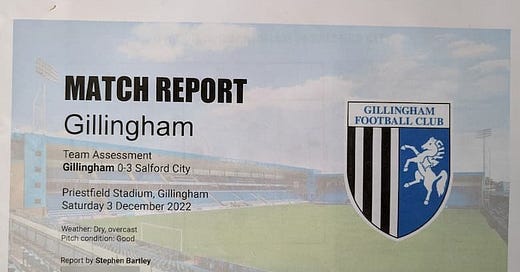

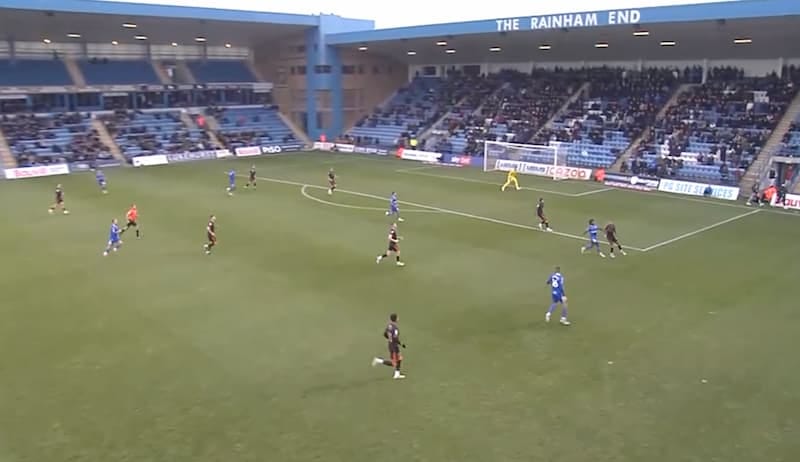
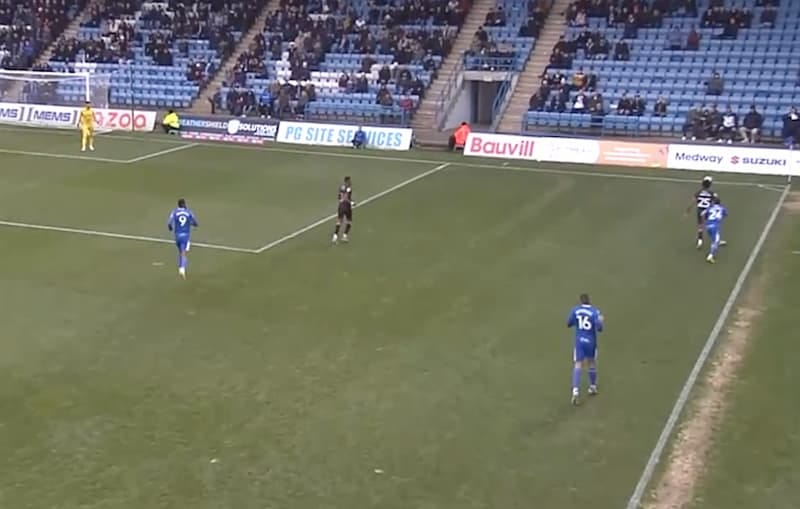
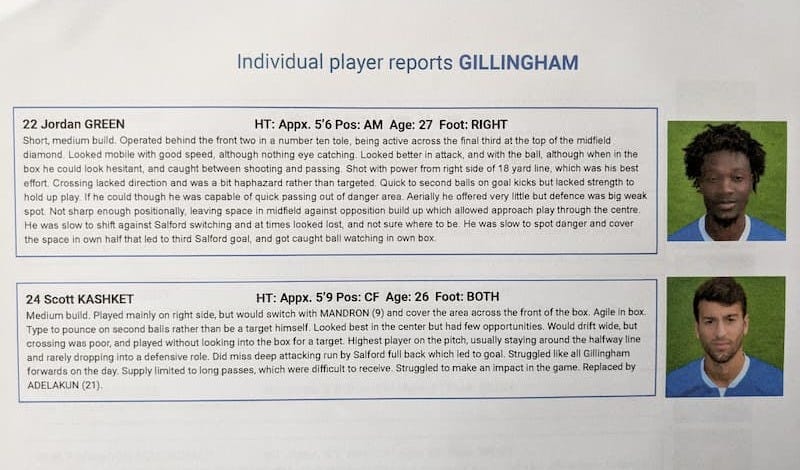
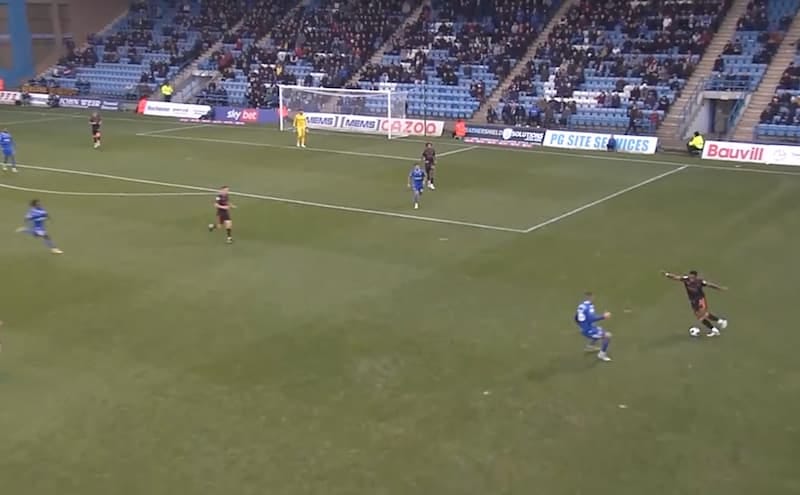
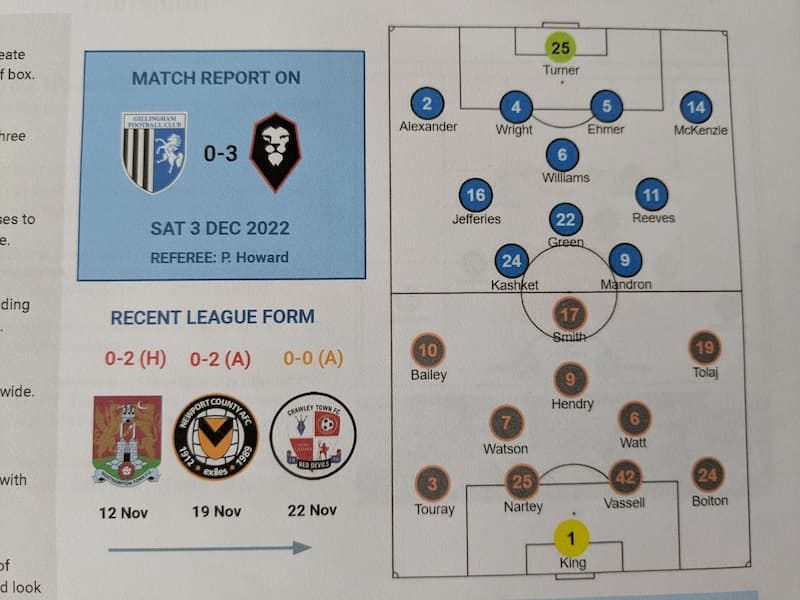
Your honesty and willingness to openly examine your earlier work to share your failings are genuinely inspiring. It takes real bravery to revisit past efforts, acknowledge where things went wrong, and lay those lessons bare for others to learn from. I can only be impressed by the depth of your insight into not just what you got wrong, but why, and how you’ve used that understanding to grow and help others avoid similar pitfalls. It is abundantly clear you have come a long way since then, and your reflections offer invaluable perspective for anyone looking to improve in this field. Thank you.